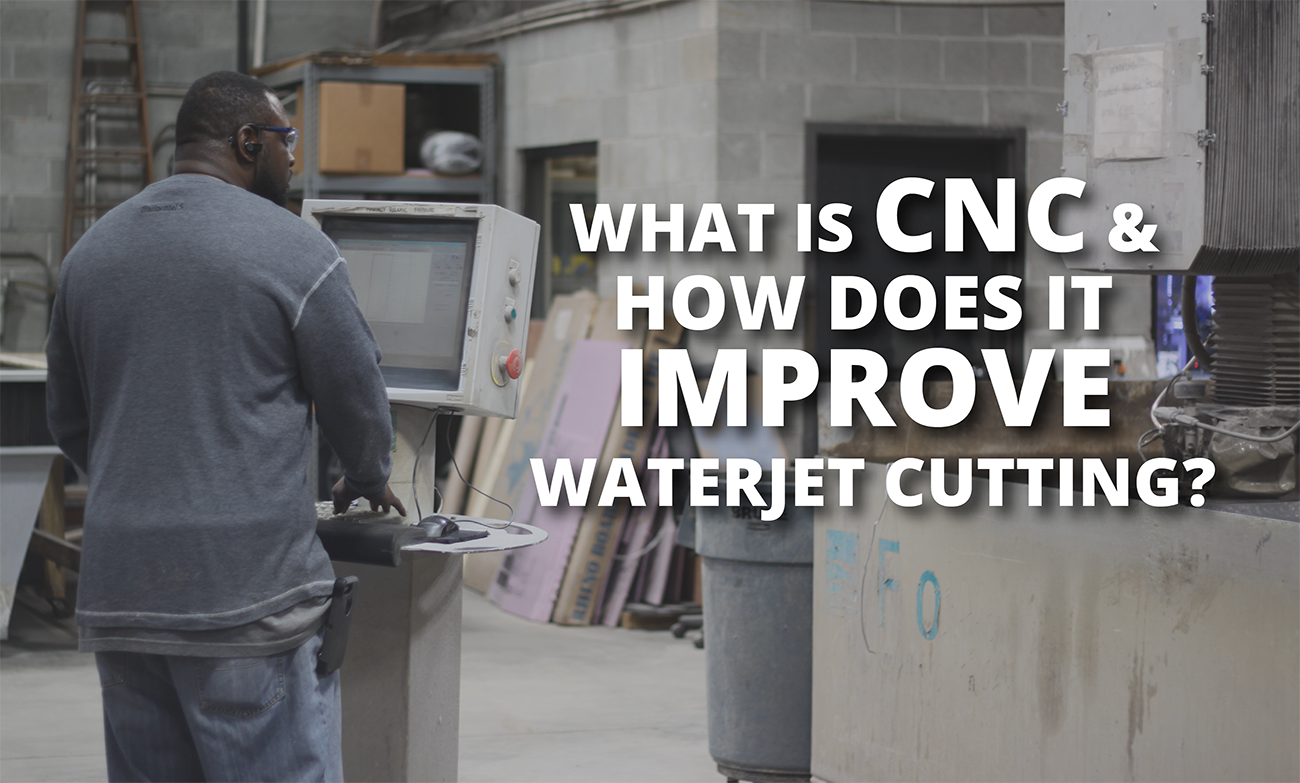

What is CNC and How Does it Improve Waterjet Cutting?
What is CNC?
CNC stands for Computer Numerical Control. This means that machine tools, in this case our waterjets, are controlled by a programmed computer through numerical input. These are no ordinary computers, they have unique software and a control console that make them important and valuable to the process.
How Does it Work?
The computer program is customized for our waterjets and then programmed with specific CNC machining language, known as G-code. This code controls all features of the process such as feed rate, coordination, location, speed, position, and velocity, thus producing exact result with tolerances up to .005”.
Here are the steps we take to make your product perfect:
- A 3D technical drawing is created by the computer software, known as a mechanical design automation (MDA) or computer-aided drafting (CAD).
- We enter your basic cutting parameters such as material type, thickness, and desired edge finish.
- Once the program is loaded with the correct data and information, the program is vetted to insure that the proper speeds, offsets, and other parameters are as they should be to ensure the part is geometrically correct.
- If everything goes according to plan, the process is set in motion and the machine does the rest of the work to create the exact product.
What Kind of CNC Waterjets are There?
Let’s take a look at the two main types of waterjets used in the CNC industry: pure, and abrasive.
Pure: Waterjet technology started out with pure waterjets. They are the cleanest form of waterjets, as they use only a highly pressurized stream of water to cut materials. The pure waterjet cutting process is a form of cold-cutting, which means that there is no risk of heat-affected flaws on the material. Pure cutting is ideal for cutting most types of non metallic materials such as rubber, plastics, foam, and many other materials.
Abrasive: Abrasive waterjets utilize a highly pressurized stream of water as well as abrasive particles to cut materials. Abrasive waterjets can cut nearly any material including ceramics, composites, glass, stones, thick plastics, and metals. Adding the abrasive to the waterjet process increases precision and speed.
What are the Advantages of CNC?
On top of the many benefits that waterjet cutting offers, such as environmental friendliness and small cutting kerf width, there are many advantages of using CNC in our waterjets. Let’s take a look at the many advantages of waterjet cutting enhanced by CNC in comparison to manual machining.
- No Human Error: We can always trust computers, since they are programmed to do exactly what they’re asked to do. By using computer based on data, the only room for error in the process is a machine malfunction or a data input error.
- More Precise: This process is more precise than manual machining because of the exact coding.
- Productivity in Repetition: The cutting process can be repeated in exactly the same manner over and over again, creating cookie-cutter copies on command. This can be useful for bulk production.
- Complex Shapes: This process can produce complex three-dimensional shapes that would be nearly impossible for manual machining to create.
Cutting Experts Uses CNC Waterjets and Routers
We’re completely committed to providing our clients the best cutting jobs we can, that’s why we use CNC machinery. With benefits ranging from more accuracy, less mistakes, and the ability for copied cutting, it was an easy decision for use to choose CNC machinery.

